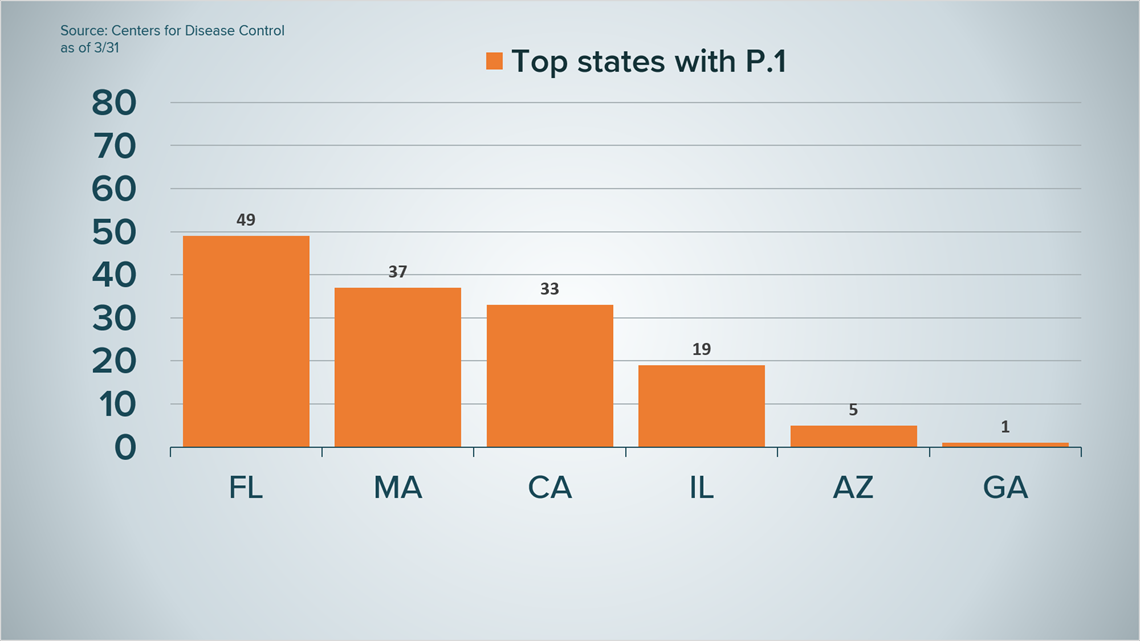ATLANTA — Federal health officials are begging political leaders to wait on easing COVID-19 restrictions. The plea from top officials come as Georgia prepares to join the growing list of states lifting pandemic restrictions - all as COVID-19 variants continue to spread.
“Consistently three times a week for 10 weeks – Dr. Wilensky has said wear a mask, practice social distancing, and don’t travel unless it’s essential," Andy Slavitt, Acting Administrator of the Centers for Medicare and Medicaid Services, stressed Wednesday.
"Three times a week for 10 weeks, we have repeated that conversation with all governors and local officials, so the people who are in violation of that are choosing to do that," he said.
Last month, Governors in Texas, Mississippi, and Arizona were just some of the leaders who announced significant loosening of statewide pandemic restrictions including removing mask mandates and indoor capacity limits.
So what happened in the weeks since? Let's look at Texas.
The Lone Star state lifted their mask mandate on March 10. Initially, cases dropped, as seen in the graph below, but then started increasing again over the past 10 days.

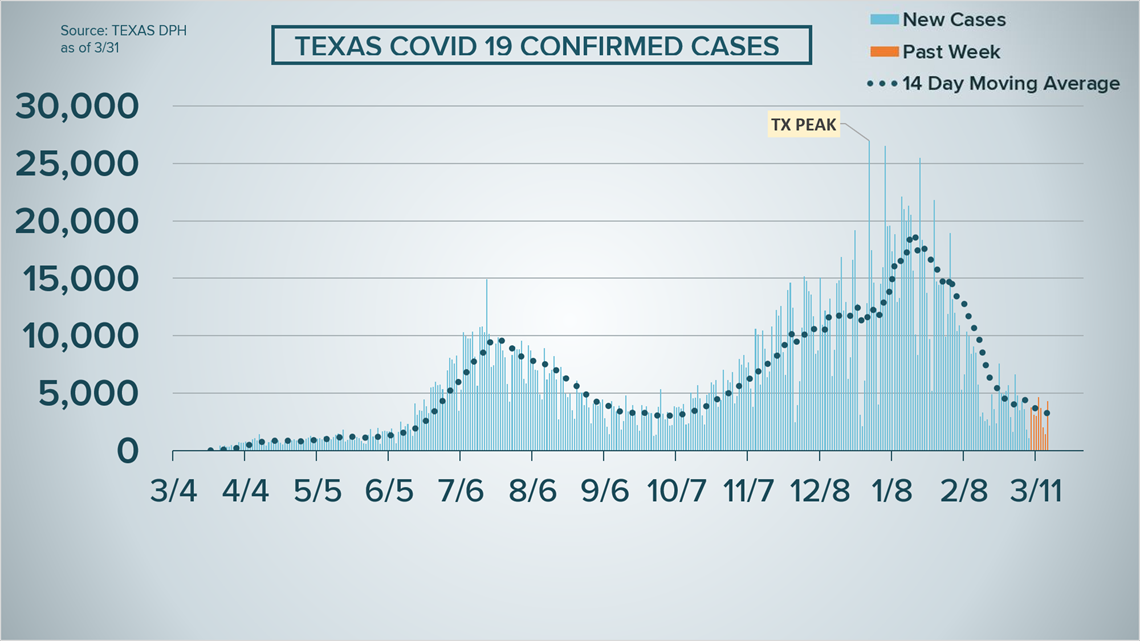
Compare that to Georgia. The state never had a mask mandate, but Georgia has not seen some of the increases being experienced in other states. You can see the state's curve in the graph below.

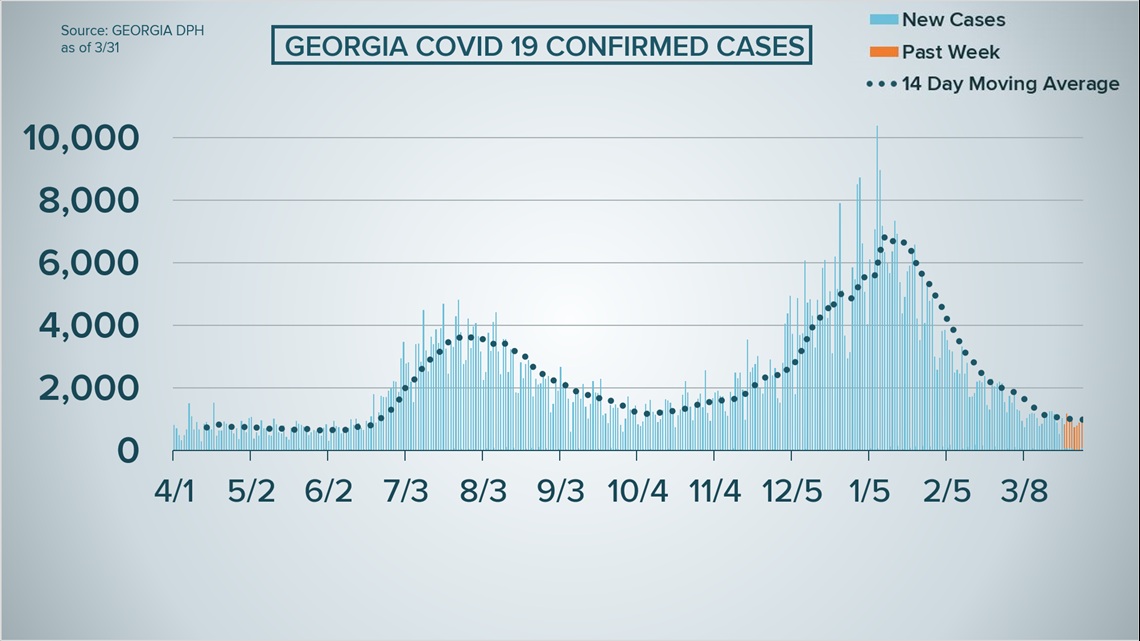
But on Wednesday, Governor Brian Kemp announced that an executive order lifting restrictions would go into effect on April 8. Under that order, businesses will be able to get rid of their 6-foot social distancing rule, gatherings of 50 people or more will be allowed, and there will be no more shelter in place requirements for vulnerable populations. There will also be no more enforcement of remaining pandemic restrictions.
And experts caution there's another concern: most Georgia schools have not yet gone one spring break, meaning a Georgia rise in cases is more likely to happen in mid-April, about a week after a travel surge - and once places like restaurants, bars and other venues start to open up more.
Heath experts said they understand the country is ready to get back to normal life, but pleaded for people to hold on a little longer. That's because more contagious variants of the COVID-19 virus are becoming the dominant one in many parts of the US.
So far, the U.S. has seen close to 12,000 cases of the B.1.1.7 variant, which is the predominant strain in Europe, 312 cases of the B.1.3.51, and 172 confirmed cases of the P.1 variant. That's shown in the graph below.


Georgia has confirmed cases of all three of these variants.
Currently, as seen in the graph below Georgia ranks fifth, with at least 592 cases of the B.1.1.7 variant first identified in the United Kingdom, which is highly contagious.

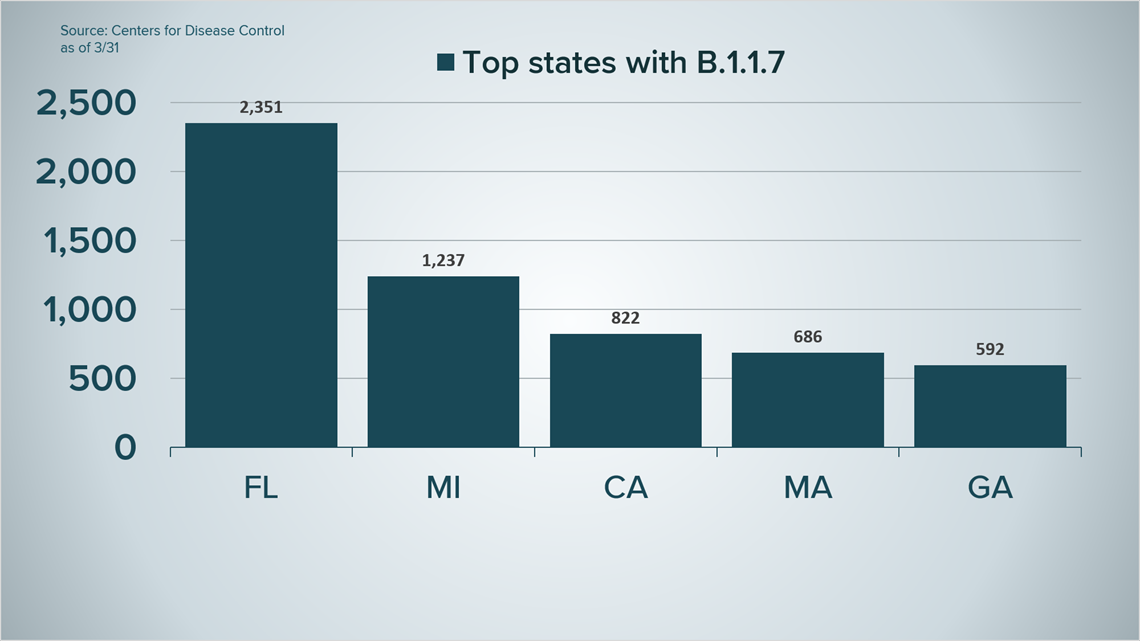
As seen in the graph below, the state ranks sixth for the most B.1.351 strains - first identified in South Africa - in the country with 22 cases, which the CDC said is less susceptible to vaccines.

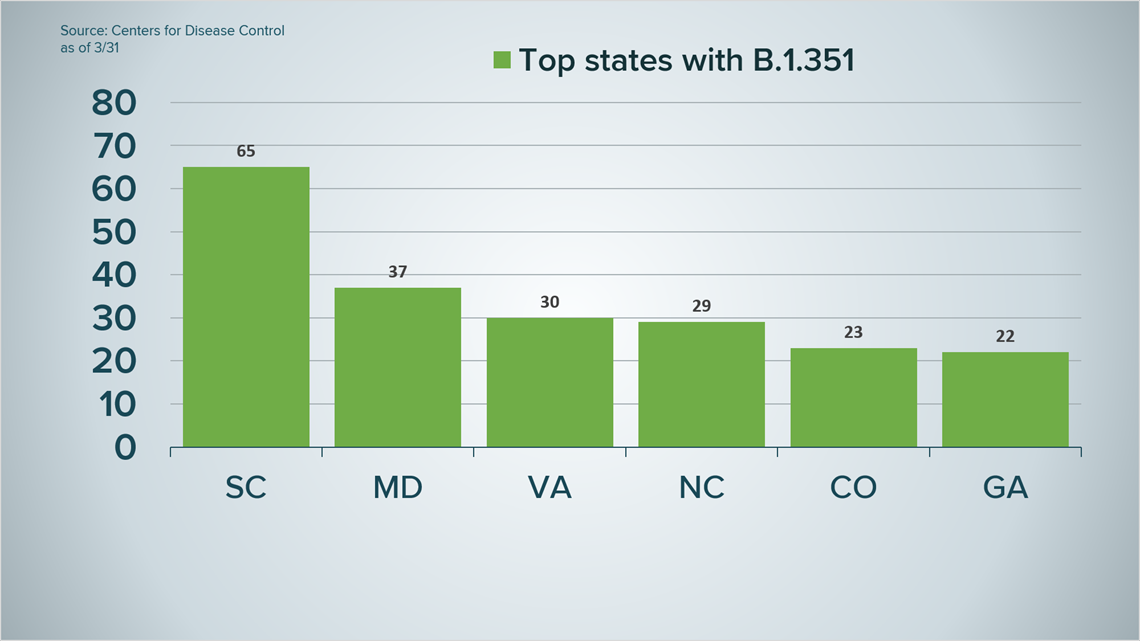
Just last month, Georgia confirmed its first case of the P-1 variant, first identified in Brazil, last week in Newton County. While the spread of that variant is limited, the graph below shows that Georgia is sixth-highest for the variant.

